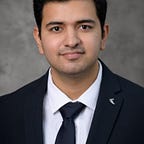GA with Repeated Crossover for Rectifying Optimization Problems
There have been various genetic algorithms (GAs) that have been initiated for the purpose of solving optimization issues in the course of research purposes in optimization. Because of the variability in the features of various optimization issues, none of these algorithms are capable of displaying a more robust performance. The differentiating aim of every optimizing issue potentially makes it more difficult. The success of the GA is dependent on the search operators. In this research, we have proposed the GA that basically works on until we obtain an effective offspring. To determine the performance of the algorithms, we have compared our algorithm with some well-known single-objective optimization problems and analyzed the results. The experimental evaluation indicated that the algorithm arrives quicker than its counterparts to the optimal solution. Also, the results produced were better in terms of the objective value, thus exhibiting a superior performance in terms of both runtime and fitness value.
Optimization problems can be divided into two categories: combinatorial
optimization problem and continuous optimization problem. Combinatorial optimization problem is an optimization problem . Optimization problems can be seen as generalizations of the problem of decision, where an objective function further evaluates the result and the goal is to find correct and effective solutions with optimal objective function values. Optimization is at the core of many real-world problem- solving processes. Multi-modality, however, is often time-consuming in the presence of high dimensionality and non-linearity. Evolutionary algorithms (EAs) have shown tremendous success over the past several years in solving complex optimization problems. Although there are several different algorithms in the EA family, the most popular is the genetic algorithm .
In our research work, we’ll be comparing our repeated crossover GA (GA-RA)
against three well known GA that are gGA( generational genetic algorithm), ssGA (steady-state genetic algorithm) and scGA (synchronous cellular genetic algorithm).
Our intention in this research is to develop a modified GA with a randomized operator proposing a new crossover operator. We called GA-RA the algorithm proposed . First, GA-RA randomly creates an initial population of PS size.Then an archive pool will be filled with the best people (based on their limited violations and/or fitness function). Then a size TC tournament selection procedure will be available in the vectors and saved in the selection pool. For crossover operation, for each three consecutive individuals, three offspring are generated with a crossover rate (cr) as previously. We are using a randomized operator with a probability p after generating all offspring to escape potential local minima. Select the best PS individuals as the new
population of the next generation and combine all the users from the archive pool . To ensure greater diversity, if any individual in the population is identical to another individual, it is likely that one of them will move within the boundaries with probability, where.Table1 shows the steps of GA-RA.
We also applied our algorithm to a task scheduling problem. Task scheduling primary goal is to schedule processor tasks and minimize scheduling make-up, i.e. time to complete the last task relative to the first task start . The problem’s output is task assignments to processors. We used CloudSim to perform tasks as a platform tool.Several organizational researchers like HP Labs in the U.S.A., are using CloudSim in conducting their research work on energy-efficient management of data centre resources and Cloud resource provisioning. The parameters used have been entailed in table 5.The experiment has been carried out in three different environments:-
- 5 resources and 100 tasks
2. 7 resources and 200 tasks
3. 10 resources and 300 tasks
We tested our algorithm against GGA,SSGA and two of the default policies given in CloudSim that are Space shared and Time Shared. The results obtained are given in table 9.We can see clearly that GA-RA is a better than the others. In all the three cases, the makespan generated by GA-RA is less than those of GGA, Space shared and Time Shared. Therefore even in the case of task scheduling problem GA-RA is found to be superior.
We have studied different types of algorithm and some protocol in which we analyzed the GA-RA algorithm is much better algorithm. Table 10 show the parameters of GGA, SCGA, GA-RA, CLOUDSIM, ACO. In recent papers for optimizing the data they used Artificial bee colony algorithm, Bayesian optimization algorithm, efficient evolutionary algorithm, Sorting Algorithm. Detail review or algorithm shows that none of these techniques are able to provide best performances, crossover, mutation. Compared to the existing one, the proposed algorithm shows better results.
Conclusion
Over the past several decades, many evolutionary algorithms have been introduced to solve limited optimization issues. In this paper, we have shown that by adopting the new RA crossover with a randomized operator, GA’s efficiency can be improved. In the proposed algorithm, an initial population was randomly generated and the best individuals in an archive pool were collected. The proposed crossover is used with its randomized operator to produce new offspring. These offspring were then randomly assigned in the archive pool with individuals. The generated offspring were then combined with the individual archive pool, and the best individuals were used as a new population for the next generation. GA-RA was used to solve test problems and was found to be superior in the best differential algorithm. From these results, we can conclude that our algorithm is much better than differential evolution, so it is faster than the other algorithm .We solved another set of restricted issues as well. It has also been found that the results are robust and have high quality. We will provide more theoretical analysis of our proposed algorithm for future work. We also intend to analyze the effect of each parameter in more detail.
The research paper is available at : https://link.springer.com/chapter/10.1007/978-3-030-44407-5_11
The source code is available at:https://github.com/mayankjha-purdue/research_work/tree/main/GA_repeated_crossover/src
